I spent a wonderful week over the new year in the Galapagos Islands, and saw many wondrous things there. Many of those fall into the realm of biology, but I wanted to take the time today to organize some of my observations about the geology of the place. It’s mostly volcanic, with a tangent into the sedimentology of beach sand. Enjoy these many photos, and I hope you are inspired to visit this place yourself someday…
Let’s begin with a prominent volcano called Daphne, east of Baltra (where the airport is) that I saw both from the air…

…and from the deck of the ship, once we had sailed:

We didn’t stop there, but I’m guessing that’s a tuff cone, a big pile of pyroclastics that built up from submarine eruptions, a la Surtsey in Iceland.
Continuing with the pyroclastic theme, here’s a look at Bartoleme, where tan tuff hosts a lens of something white. I note the curved bottom and flat top to this unit, and the red shadow of contact metamorphism beneath it, and so I think it’s a pyroclastic flow deposit. I suppose it could also be a rhyolite flow. Unfortunately, I haven’t been able to successfully fact-check this “armchair” geologizing from the resources available on the Internet, so I welcome your insights.

(Note also the basalt in the foreground. That’s the Sullivan Bay flow, of which more in a moment.)
Let’s stick with the tuffaceous islands for the moment. Kicker Rock is the eroded remains of a tuff cone from a violent Surtseyan-style eruption.

Zoom in closer to see the prominent vertical fracture set (as well as some boats for scale) as well as the subtle traces of pyroclastic bedding layers sloping to the left on the left, and to the right on the right:

Here’s a set of 6 photos (no scale, alas) of seaside cliffs across the water at Cerro Brujo (“Witch Hill”) showing similar tan tuff with black basalt inclusions:


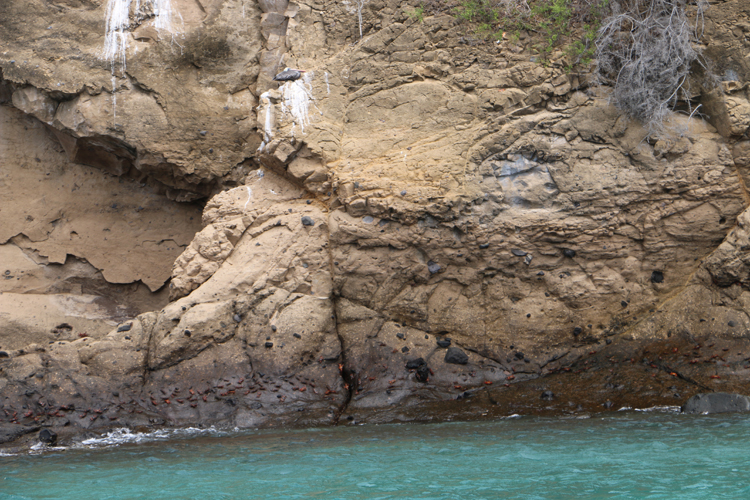



Here is a cobble I found on the beach south of Cerro Brujo, where one of these dark, angular chunks is shown as an inclusion in the tan-colored tuff:

The cobbles of tuff weathered from these cliffs rapidly round into little ping pong balls which are most numerous close to the cliffs, mixed in with basalt cobbles, shells and sea urchin spines (long purple elements):


The sand on this beach has a significant olivine fraction:
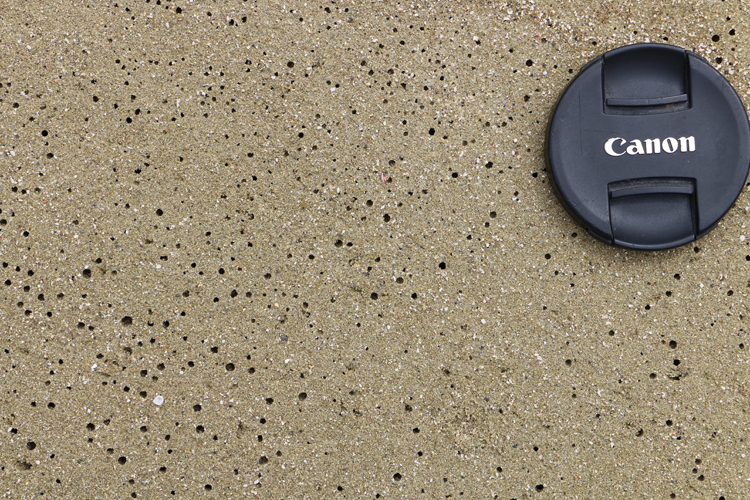
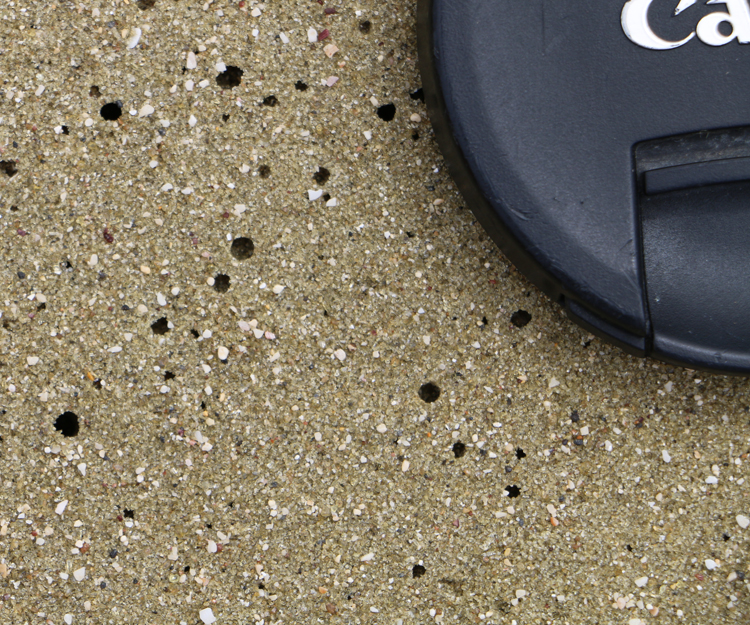
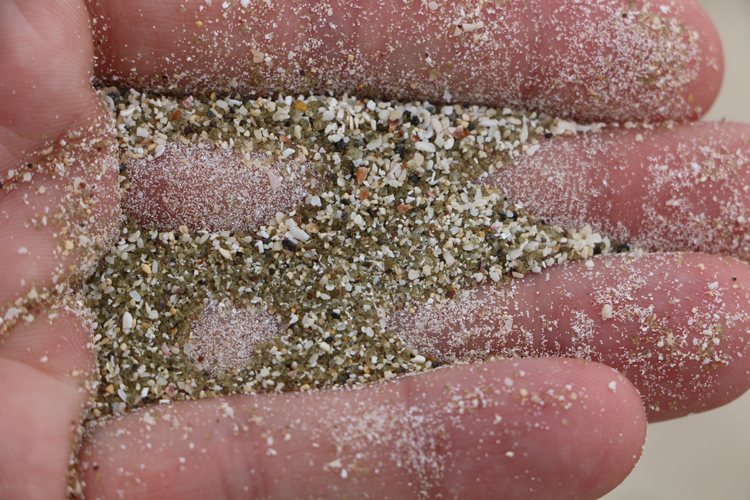
The majority of the beach sand we saw was shell and coral bits: soft, white sand. The contrast with seaside outcrops of basalt can be quite striking, as here at Cerro Dragon:
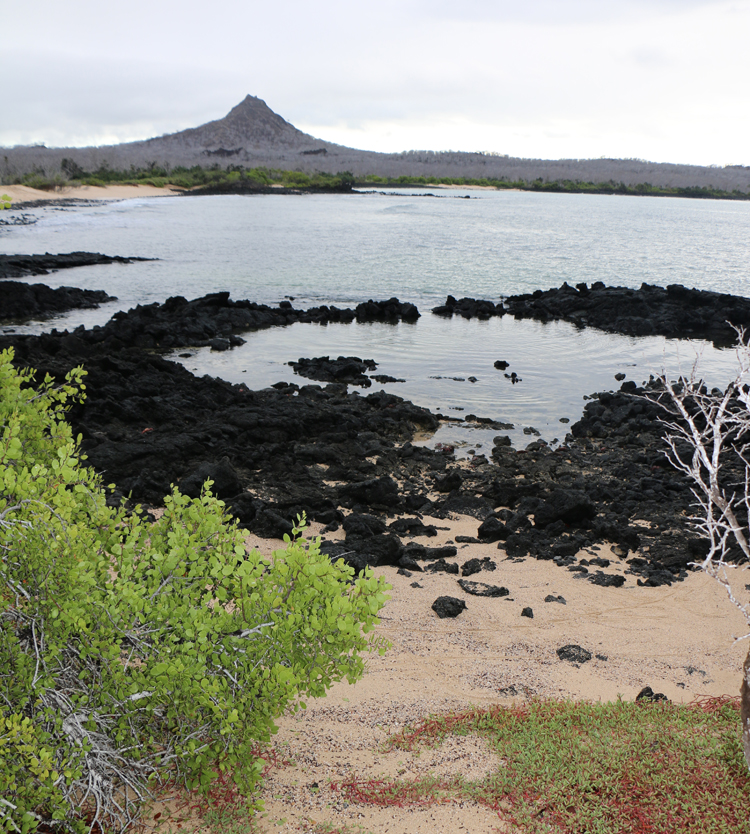
Or here, at a beach on the shore of Santa Cruz:

A few examples of the sand in close-up:
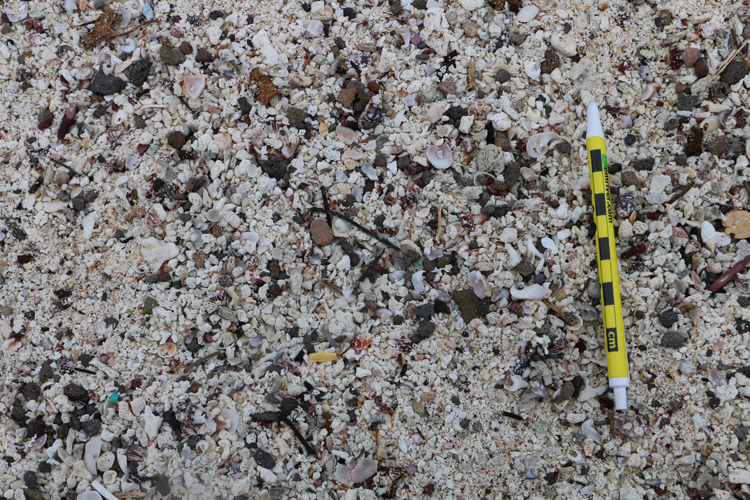

This beach sand can get lithified and make coquina. In this case, here’s a storm- (or tsunami?-) tossed slab, several meters above sea level, with a boulder-sized inclusion of basalt of the left side.

Three close-up shots of textural details in the coquina:
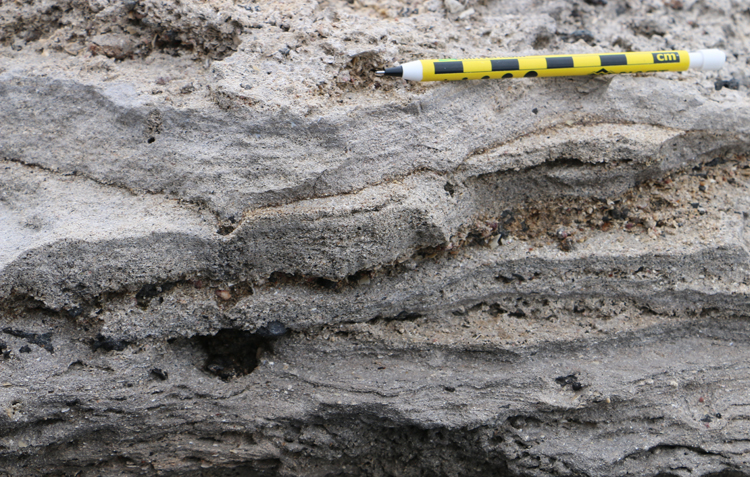


But mostly, what I saw was basalt. Some of the basalt was decidedly porphyritic, with big chunky feldspar phenocrysts:

And some of those were zoned in a most delightful way:


The basalt was frequently vesicular in outcrop, as seen here, with a Sally Lightfoot crab for scale:
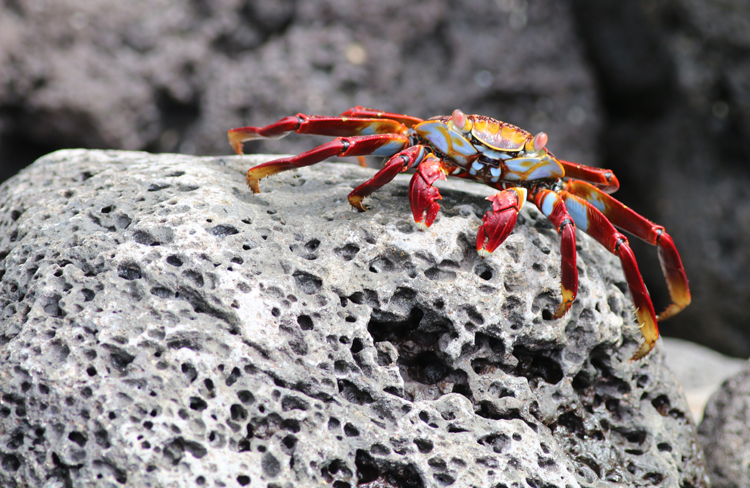
In some cases, like at Sullivan Bay, it is glorious pahoehoe basalt from a flow about 200 years ago:

There, basalt has oozed out over an orangey scoria, to dramatic effect:
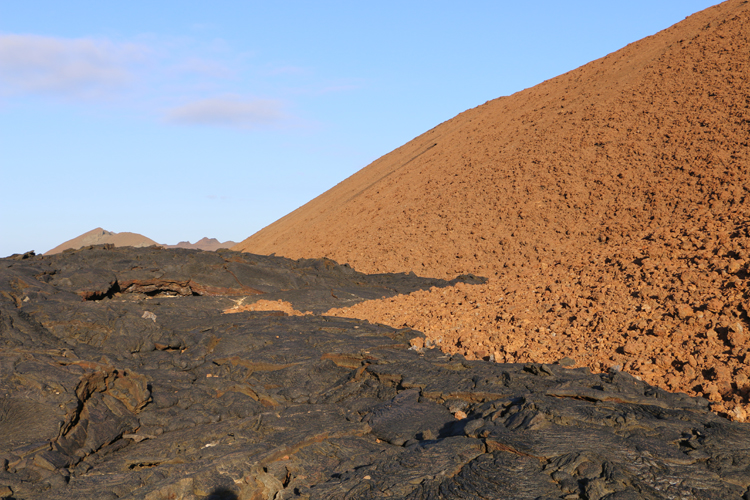
It has built out a broad plain that is full of interesting details. Hiking over it with my family was the geological highlight of the trip for me:
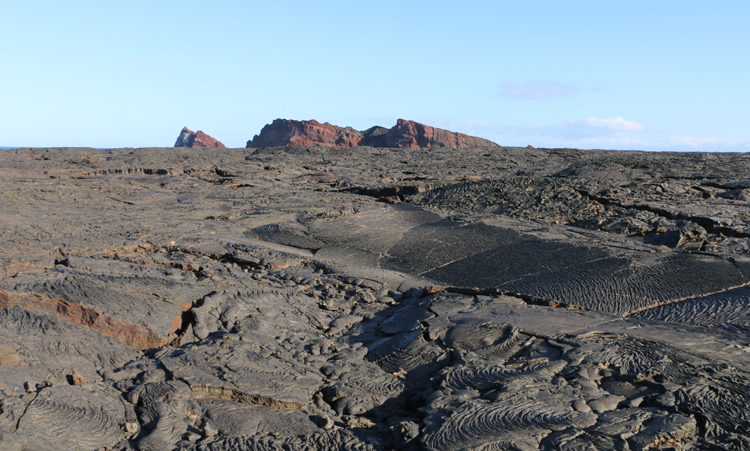

The textures here were so photogenic; it was difficult to stop capturing them with my camera.

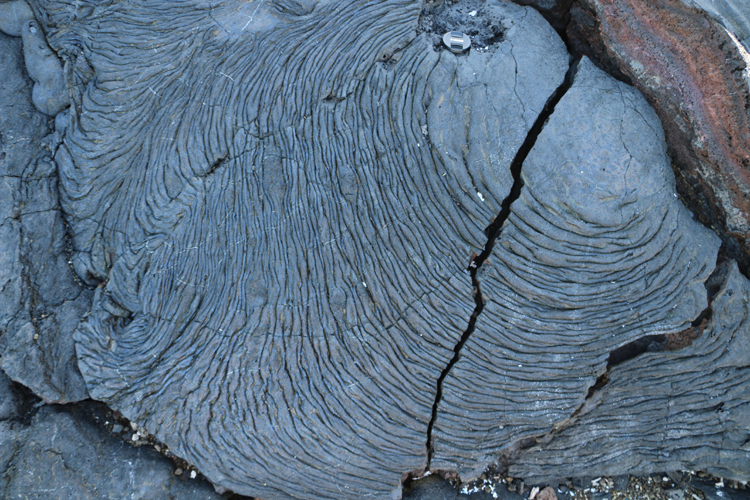
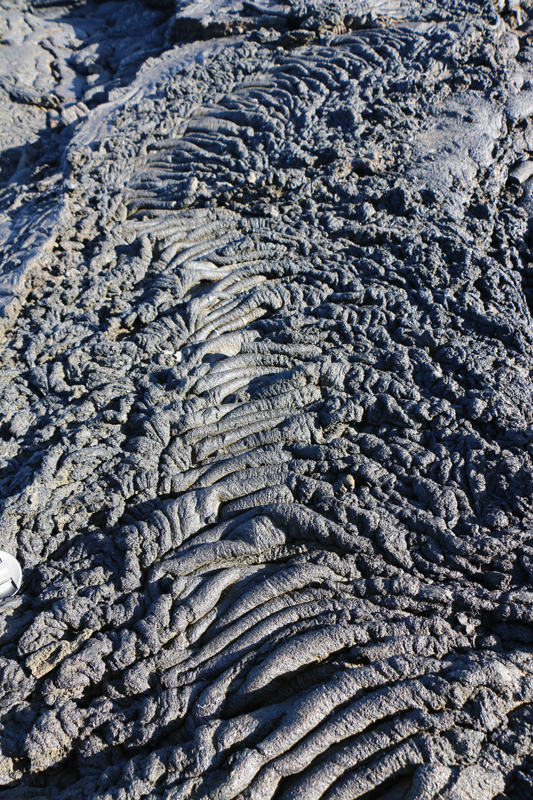
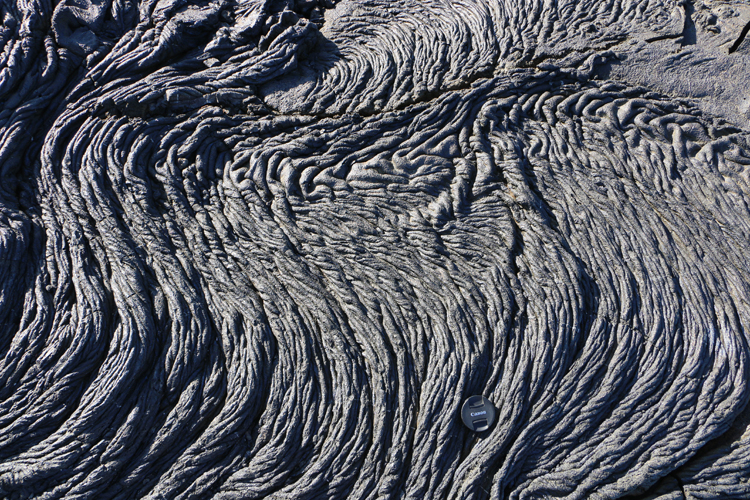
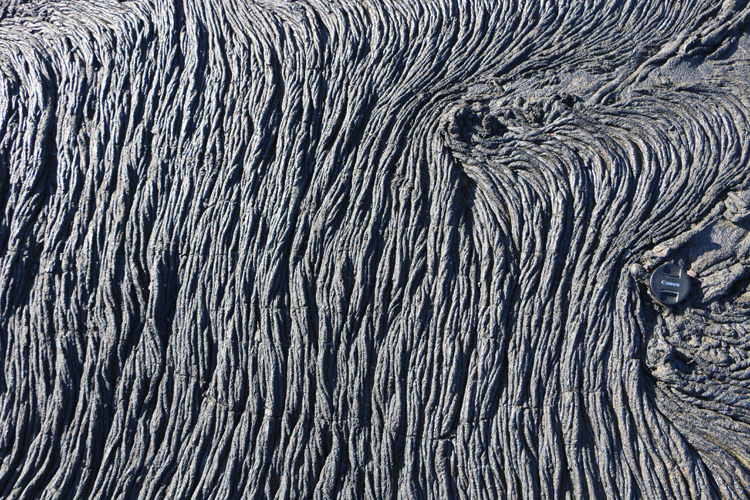
I find these overlapping “lava toes” (little basalt lobes) so charming:

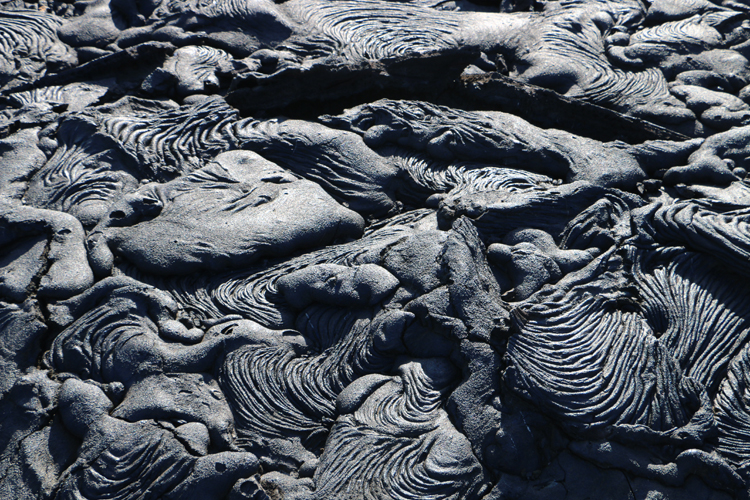
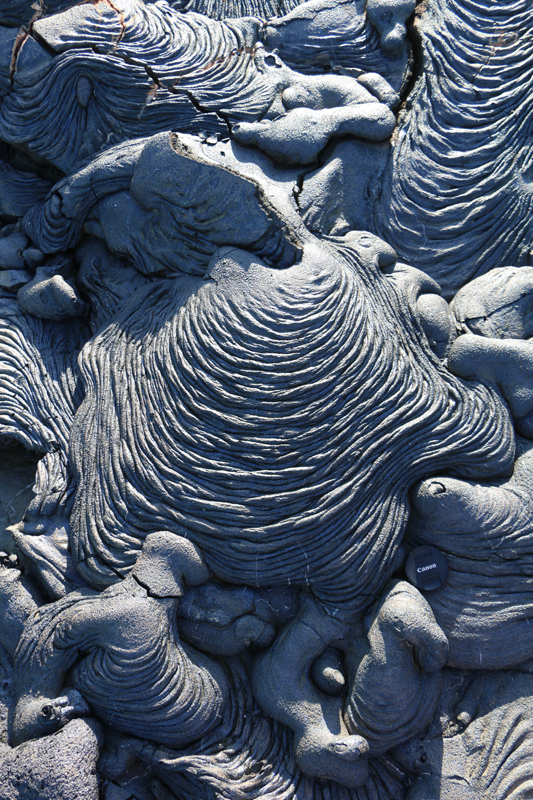
Or how about this extraordinarily consistent braided texture?
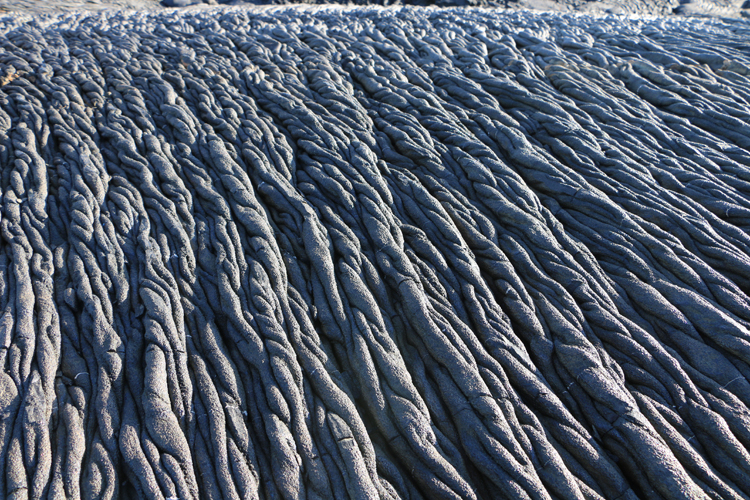
Note the “brittle deflation” evidence seen here, these concave collapse features accommodated by fractures in the pahoehoe “skin” as the molten rock beneath flowed out of the way and stopped propping up the “ceiling.”
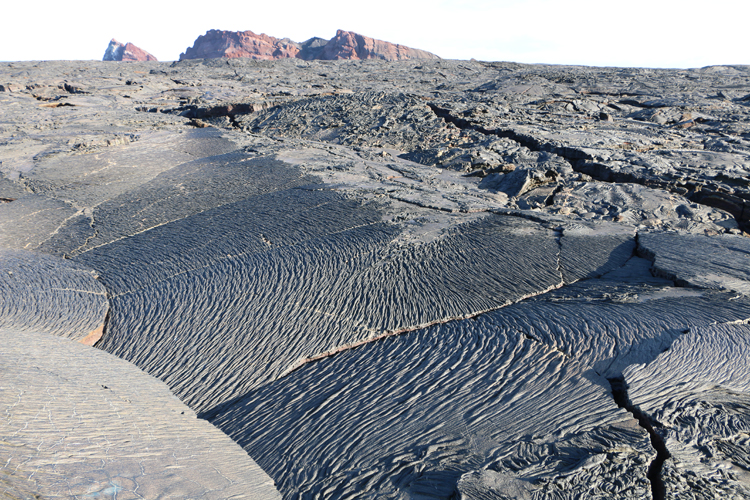
In this exposure, there’s a neat texture that reminds me of thin sections of schist, with its mica-rich and quartzofeldspathic domains. Note that many of the less-wrinkled areas host some sort of inclusion within them: these are potentially chunks of scoria or vesicular basalt that were there prior to the most recent eruption, and entrained in the flow, providing stiffness and strength to the surface layer as flow forced it to fold:
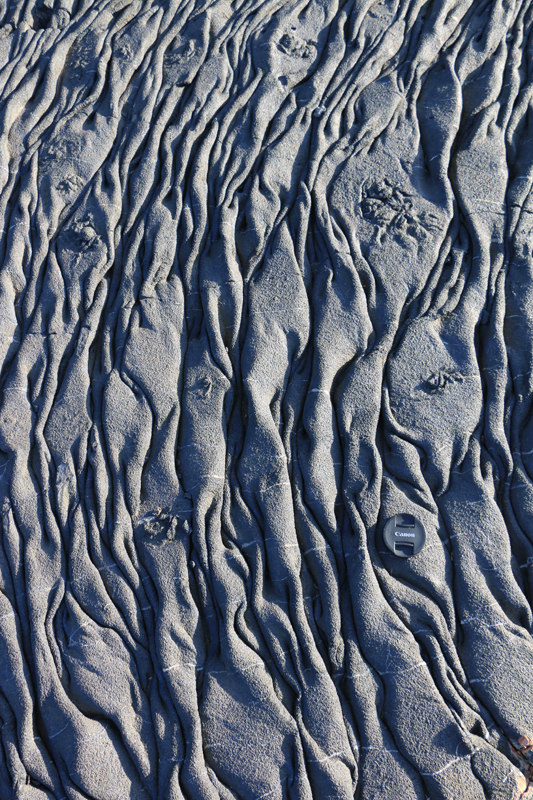
Speaking of inclusions, here are several other elegant inclusions in the Sullivan Bay basalt flow…
A vesicular basalt:

…a block of orange scoria:
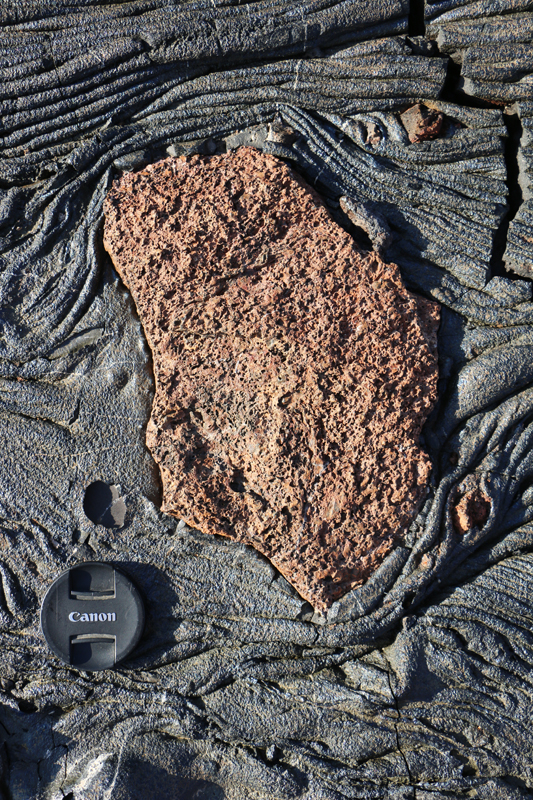
And the tip of a bigger block in the lava’s subsurface, making a petrified eddy in the stream of the pahoehoe’s flow:

There were several spots where cracks in the lava apparently served as fumaroles, acting as conduits for steam vented from the cooling flow or perhaps water from whatever lay beneath it:
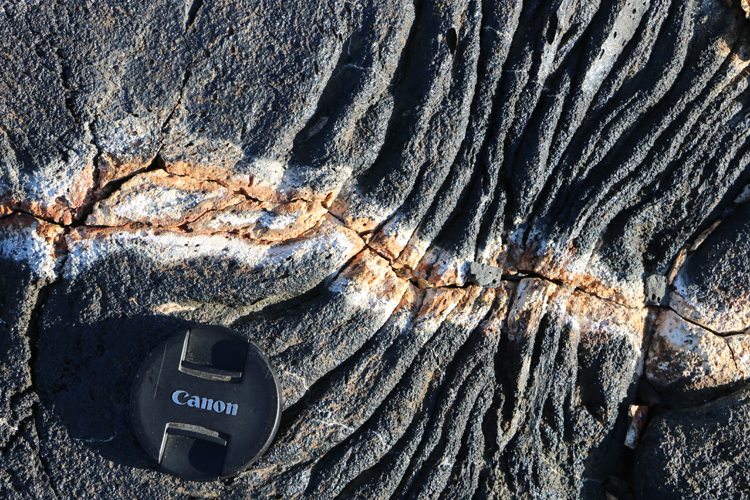
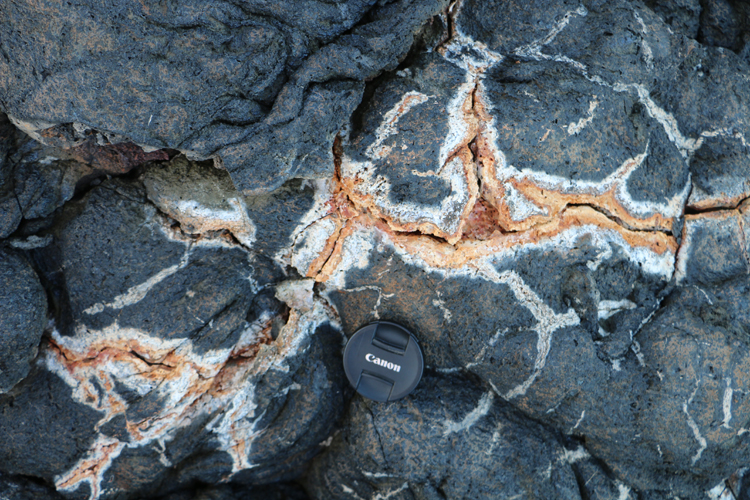
Here are some nice examples of big vesicles, distorted by the flow into ellipsoidal dimensions, some of them intact and some ruptured in the passage of time:
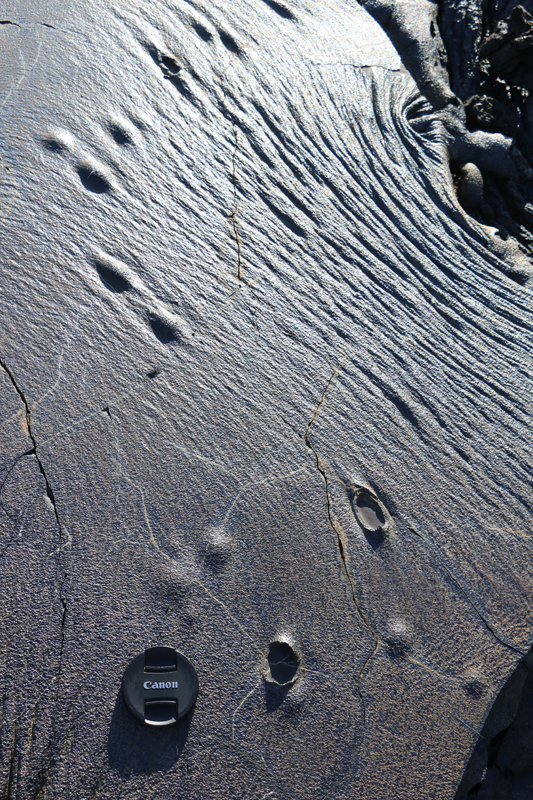
Another spectacular feature was this hornito (“little oven”) which my son (and his hammerhead shark toy) examine in this photo:
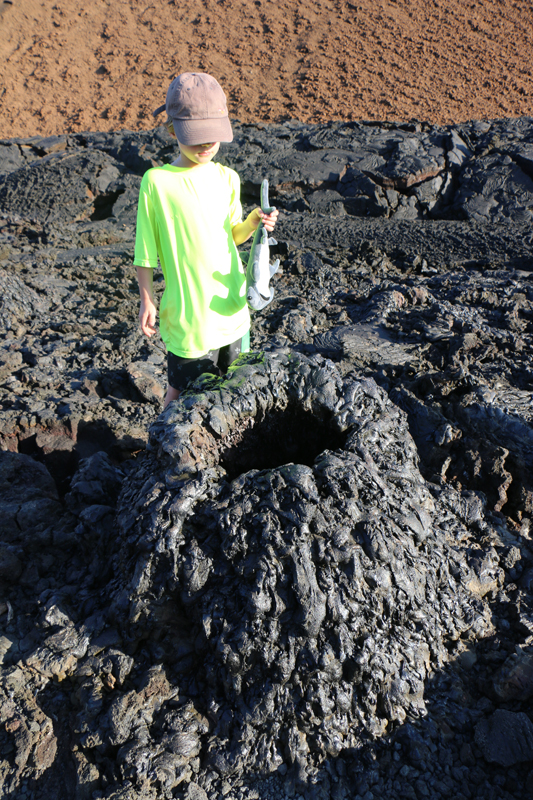
Very little in the way of life has colonized the Sullivan Bay flow in its two centuries of existence. We saw a lone Galapagos penguin at its edge, and here’s a cactus trying to establish a foothold:
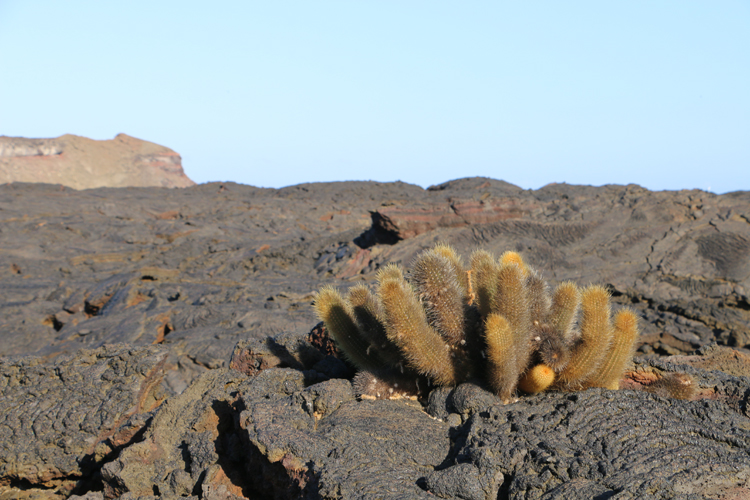
Other than that, it looked pretty pristine. What a great thing to be able to see and traverse in person!
Next up (now that we’ve covered the rocks), I’ll share some imagery of the plants and animals I saw on my trip…

Stunning images!
Muito obrigado, pelo privilégio de ve-las, de seu compartilhamento.
Many thanks, for the privilege of seeing them, of your sharing.
What a brilliant tour of volcanic Galapagos. Thank you for sharing.
There is just something magical about igneous rock and these lava flows are beautiful
Thank you for sharing the pictures
Very cool adventure, photos ant text. This place seems to be amazing, amybe someday…
Thanks for the explicit pictures of volcanic flow features.
Thanks for the wonderful photos of volcanic features and your explanations, Calllan. For those that will never be able to experience a bucket-list trip like this I thank you for sharing.
Fabulous photos, as always!
Wonderful work! We just arrived back from our Galapagos trip amazed and in awe of the place. We traveled with National Geographic and their naturalists kept our minds engaged on every hike.
Your photos are spectacular, and help explain the different geological areas perfectly.
Thanks so much for posting.